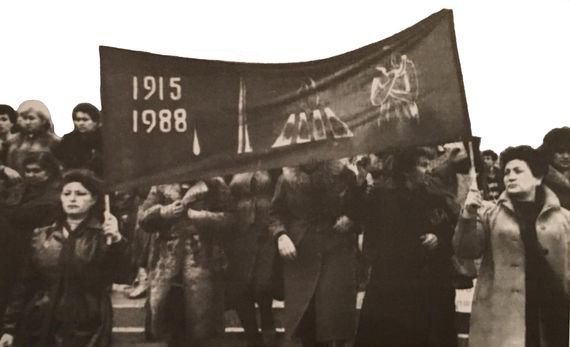Fri Jan 26 2018 · 20 min read
Karabakh Movement 88: A Chronology of Events on the Road to Independence

This year marks the 30th anniversary of the Karabakh Movement, a monumental event in the collective and historical memory of the Armenian nation. Mass demonstrations starting in early 1988 called for the reunification of the Nagorno Karabakh Autonomous Oblast (NKAO) - an autonomous enclave within Azerbaijan SSR - with Soviet Armenia. The popular movement made headlines around the world and led to the reawakening and transformation of the Armenian nation.
The historic Armenian lands of Nagorno Karabakh were forcibly placed under Azerbaijani rule in 1921 by Joseph Stalin. For the next seven decades, Azerbaijan's policy of discrimination against Nagorno Karabakh was aimed at artificial suppression of its socioeconomic development and active de-Armenianization. Armenian monuments and cultural heritage were destroyed or presented as having Azerbaijani origin. Because of this ethnic discrimination, the majority Armenian population of Karabakh never abandoned its intent and desire to separate from Azerbaijan SSR.
Indeed, during the Soviet era, a number of attempts by Armenians were made to raise the Nagorno Karabakh issue before the central authorities of the USSR primarily after the Second World War. Representatives of the people of Nagorno Karabakh appealed to Moscow with numerous letters and petitions (1945, 1965, 1967, 1977).
First Secretary Mikhail Gorbachev’s policy of glasnost and perestroika toward the end of the 1980s that were meant to liberalize the Soviet Union’s political and economic landscape, provided a historic opportunity for the Armenians of Karabakh to once again express their grievances and demand reunification with the homeland.
It was a time of sweeping global changes that would lead to the fall of the Berlin Wall in 1989 and the eventual collapse of the Soviet Union in 1991.
Starting in 1987, demonstrations were taking place in Soviet Armenia over environmental concerns that included demands for the shut down of the Medzamor Nuclear Power Plant. These environmental concerns would ultimately transform into a wider pan-national movement not only for the people’s right to self-expression, but would pave the path to independence.
When the movement began, it did not bear any anti-Soviet bias and there were no calls for immediate independence for Armenia. However, by the spring of 1988, when it became clear that all possible solutions to the problem of Karabakh were unattainable within the framework of the Soviet system, this all changed. A symbolic moment was on May 28, 1988, the 70th anniversary of the First Armenian Republic (1918-1920) when Movses Gorgisyan hoisted the Armenian tricolor flag in Yerevan’s Opera Square.
A group of young intellectuals, who came to be known as the Karabakh Committee led the movement later transforming into the Pan-Armenian National Movement. The events of 1988 unravelled quickly and by 1991 both Armenia and Nagorno Karabakh had declared independence. Soon after, a full-scale war with Azerbaijan exploded lasting almost four years with the Armenians gaining control of Nagorno Karabakh, officially known today by its Armenian name, Artsakh.
The Karabakh Movement was one of the largest protest movements in Soviet history.
Below is a brief timeline of the major events of 1987-1988.
1987
March 3
Suren Ayvazyan, a geologist and historian sends a memorandum to the General Secretary of the USSR Mikhail Gorbachev about Nagorno Karabakh and Nakhichevan (an Armenian exclave under the jurisdiction of Azerbaijan SSR). In his memorandum, Ayvazyan writes about Armenia’s historic right over Karabakh and defends the return of both Karabakh and Nakhichevan to Soviet Armenia. He underscores the unbearable conditions and discrimination of the Armenians of those two regions. “Armenian khachkars (stone-crosses) have been treated with sanctioned hatred in the Republic of Azerbaijan. One of the Armenian masterpieces - the Gandzasar Monastery - is in total ruins…” writes Ayvazian.
August 5
The Russian Izvestia publishes a piece about a major case of miscarriage of justice “which seems to have aggravated the problems in Karabakh.” The article refers to two Armenians working at an Azerbaijani Agro-Industrial Association who were charged with embezzlement and sentenced to “the supreme penalty by the Azerbaijan SSR Supreme Court.” The men were imprisoned for three years before the ruling was overturned by the USSR Supreme Court. According to Izvestia, the court found that the case lacked sufficient evidence and that a “most flagrant case of abuse of power had occured.”
August 13-14
Approximately 75,000 Armenians from Nagorno Karabakh and Soviet Armenia sign a petition addressed to Mikhail Gorbachev. Their request is to reunify both Karabakh and Nakhichevan with Armenia. “...In the name of victory of historic justice, in the name of the realization of Leninist traditions, we are making an ardent appeal to you to reattach Mountainous Karabakh and Nakhichevan to Socialist Armenia.”
October 17
About 3000 people demonstrate in Yerevan about the environmental danger posed by Nairit, a chemical plant and the Medzamor Nuclear Power Plant in Armenia. They demand its closure.
October 18

A demonstration in Yerevan demands that Karabakh and Nakhichevan be reunited with Soviet Armenia. The police intervene to disperse the rally.
1988
February 13
Underground groups in NKAO who had been gathering signatures to petition Moscow for the reunification of Karabakh with Armenia organize the first major rally in Stepanakert. An estimated 8000 people take part in the demonstration.
February 20
An extraordinary session of the Regional Soviet (Council) of People’s Deputies of NKAO, in a vote of 110 to 17, passes a resolution: “On Petitioning the Supreme Soviets of Azerbaijani SSR and Armenian SSR for the transfer of NKAO from Azerbaijani SSR to Armenian SSR.” The same day a wave of demonstrations take over Yerevan and Karabakh.
Text of the resolution by the government of the Nagorno Karabakh Autonomous Oblast requesting incorporation in Soviet Armenia.
Regarding mediation for the transfer of the Nagorno Karabakh Autonomous Oblast from Azerbaijani SSR to Armenian SSR.
After listening to and reviewing the statements of the people's deputies of the Nagorno Karabakh Autonomous Oblast "regarding the mediation of the SSR Supreme Soviet between the Azerbaijani SSR and Armenian SSR for the transfer of the Nagorno Karabakh Autonomous Oblast from the Azerbaijani SSR to the Armenian SSR," the special session of regional Soviet of Nagorno Karabakh RESOLVES:
Welcoming the wishes of the workers of the Nagorno Karabakh Autonomous Oblast to request the Supreme Soviets of Azerbaijani and Armenian SSRs that they appreciate the deep aspirations of the Armenian population of Nagorno Karabakh and to transfer the Nagorno Karabakh Autonomous Oblast from the Azerbaijani SSR to the Armenian SSR, at the same time to intercede with the Supreme Soviet of USSR to reach a positive resolution regarding the transfer of the region from the Azerbaijani SSR to the Armenian SSR.
February 21
First inter-ethnic clashes take place in Hadrut, Karabakh. On the evening of February 21, anti-Armenian pogroms begin in the town of Hadrut leaving two dead and 16 injured. The news of these attacks spreads quickly and leads to massive demonstrations in Yerevan. It is estimated that up to one million people took part in the protests in Yerevan demanding the physical protection of the Armenians in Nagorno Karabakh and the reunification of the enclave with Armenia.
The Central Committee of the CPSU passes a resolution “On the Events in Nagorno Karabakh,” condemning the demand of the Armenian population of NKAO.
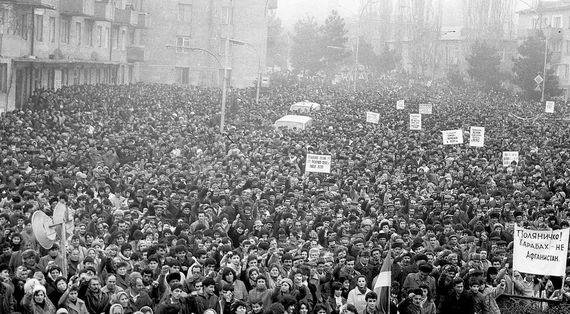
February 22
A crowd of Azerbaijanis from Agdam numbering in the thousands begins to move towards Stepanakert in retaliation to Armenian protests “to restore order.” Halfway there they clash with Armenians from Askeran who have moved to meet them.
The same day Karen Demirjian, the First Secretary of the Communist Party of Armenia, addresses the nation on public television:
“The activities and demands that the national territorial structure, currently existing in the [Nagorno Karabakh] region, contradict the interests of the workers of the Armenian SSR and the Azerbaijani SSR …Once more we are appealing to you, to the citizens of Soviet Armenia in this important moment to express bravery, self-control, thoughtfulness, patience, political maturity, a high level of organization, to more actively be involved in restructuring public life, and to the task of strengthening the international brotherhood of Soviet peoples.”
February 23
The Central Committee of the Communist Party of the USSR responds negatively to the demand by the government of Nagorno Karabakh for unification with Armenia: “Breaching of public order was provoked as a result of irresponsible calls by extremist individuals...Having examined the information about developments in the Nagorno Karabakh Autonomous Oblast, the CPSU Central Committee holds that the actions and demands directed at revising the existing national and territorial structure contradict the interests of the working people in Soviet Azerbaijan and Armenia and damage inter-ethnic relations.”
The only concession made by Soviet authorities was the naming of Henrikh Poghosyan as the new Communist Party leader in NKAO replacing Boris Kevorkov, who was cited as insensitive to Armenian needs.
February 25
His Holiness Vazgen I, Supreme Patriarch and Catholicos of All Armenians sends a letter to General Secretary Gorbachev:
“During the last few days we have been receiving numerous letters, telegrams, telephone calls from Armenia, and in particular from our bishops and church and cultural organizations overseas which, in the name of the over two million Armenians of the Diaspora, are requesting that we intervene with the high authorities in the Soviet Union, so that the question of Armenian Karabakh receives a just solution, based on our constitution and according to a resolution of the Soviet of People's Deputies in Karabakh and to democratic principles.
We are deeply concerned with the serious situation created, particularly given the fact that we have received news that there have been human victims and Armenian historical church monuments have been damaged.”
From February 25-28, communities across the Armenian Diaspora organize solidarity protests in Paris, New York, Washington, Montreal, Toronto, Cambridge and Los Angeles. Similar gatherings are also organized in Argentina, Lebanon, Greece and elsewhere.
February 26
Mikhail Gorbachev makes an unprecedented public appeal for calm and sends three members of the Politburo to Armenia, along with a Communist Party secretary in an effort to stop the demonstrations. His message in Armenia was read in Russian over Yerevan Radio by Politburo member Vladimir I. Dolgikh:
“I must say frankly that the Soviet Communist Party Central Committee has been disturbed by this turn of events. It is fraught with serious consequences. We do not wish to evade a frank, sincere discussion of various ideas and proposals. But this must be done calmly, within the framework of democratic process and legality, without allowing even the slightest damage to the internationalist cohesion of our peoples. The most serious questions of the people's destiny cannot be placed in the power of spontaneity and emotion.”
However, according to some reports, in an unprecedented show of defiance to Soviet authorities, as many as one million people take to the streets in Yerevan.
The Associated Press quoted sources in Yerevan saying that troops had been alerted and tanks moved to the outskirts of the city.
While mass rallies continue in Yerevan, the 11-member “Organizing Committee of the Karabakh Movement in Armenia” known as the Karabakh Committee is established under the leadership of Igor Muradyan. The committee was comprised mostly of intellectuals but by May 1988, the two original leaders - Igor Muradyan and Zori Balayan - had been edged aside. In an interview to Thomas de Waal, Levon Ter Petrosyan, one of the later members of the Karabakh Committee who would go on to be independent Armenia’s first President said:
“The first Karabakh Committee - Igor Muradyan, Zori Balayan, Sylva Kaputikyan and others - thought only about Karabakh. For them, issues like democracy or the independence of Armenia simply did not exist. And this was the ground where the split occurred. When they felt that we were already becoming dangerous for the Soviet system, they left. A natural change took place. They thought that the Karabakh question had to be solved by using the Soviet system. And we understood that this system would never solve the Karabakh issue and that the reverse was true; you had to change the system to resolve this problem.”
February 27
His Holiness Catholicos Karekin II of the Great House of Cilicia sends a telegram to Secretary General Mikhail Gorbachev:
“Your Excellency is aware that geographically, historically and ethnographically Karabakh is part of Armenia. It was a historical error to annex it to the Azerbaijani Republic. The Armenians of Karabakh, of Soviet Armenia, and all over the Diaspora have never ceased to demand that Karabakh be attached to the motherland, to Armenia...We sincerely believe and warmly request from Your Excellency to correct the error committed in 1923 and to make justice work for the Armenian people, by reattaching Karabakh to the Soviet Armenian Republic.”
Also on this day, the leaders of the mass movement in Armenia call for a one month suspension of all demonstrations as Gorbachev promises to personally review the Karabakh situation and appeal for calm.
February 27-29
Sumgait Pogroms
Beginning on February 27, a pogrom lasting three days against the Armenian population takes place in the industrial city of Sumgait in Soviet Azerbaijan. At the time, approximately 18,000 Armenians are living in Sumgait which had a population of 200,000.
Mobs of ethnic Azerbaijanis target, attack and kill Armenians in their homes and on the streets of the city. One day later, on February 28, a small contingent of troops from the Ministry of Internal Affairs attempts to put an end to the widespread rioting without success. It is only after the government imposes a state of martial law that the massacre is put to an end.
Official figures released at the time by the Prosecutor General of the USSR put the number of dead at 32, although unofficial reports place the figures much higher.
The scale and scope of the atrocities in Sumgait Pogrom - there are documented cases of Armenians dragged from their homes and burned in the streets - is linked to the Armenian Genocide in the consciousness of the people.
By the evening of February 29, martial law is imposed and troops patrol the streets of Sumgait. Armenian residents, under heavily armed guards, are transported to a cultural facility that was designed to accommodate only several hundred people however, several thousand Armenians eventually are sheltered there until they can leave.
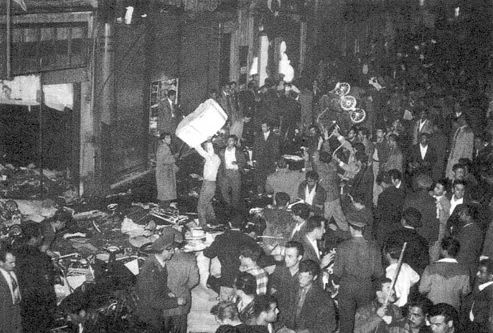
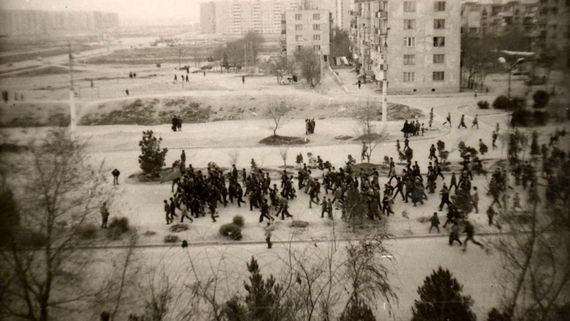
Sumgait would be the first in a series of anti-Armenian pogroms in Azerbaijan.
March 8
A group of Armenian women walk to Tsitsernakaberd Genocide Memorial in Yerevan in a mourning procession. This becomes one of the first manifestations of parallels of the Sumgait Pogrom with the Armenian Genocide of 1915.
March 17
The plenary session of the Nagorno Karabakh District Committee of the Communist Party approves a resolution for the secession of NKAO to the Armenian SSR.
March 22
Army units move to Yerevan to blockade Opera Square to prevent the planned rally for March 26.
March 25
The Central Committee of the CPSU and the Soviet of Ministers of the USSR pass a resolution on the acceleration of measures for the social and economic development of NKAO for 1988-1995. This resolution ignores the constitutional demand of the Armenians of Karabakh, ultimately transforming a political problem into an economic issue.
March 26
Yerevan is declared a “dead city.” In fact, Yerevan turns into a city under siege as soldiers cordon off large public squares where demonstrations had been taking place. All unauthorized demonstrations are banned and the Karabakh Committee is declared illegal.
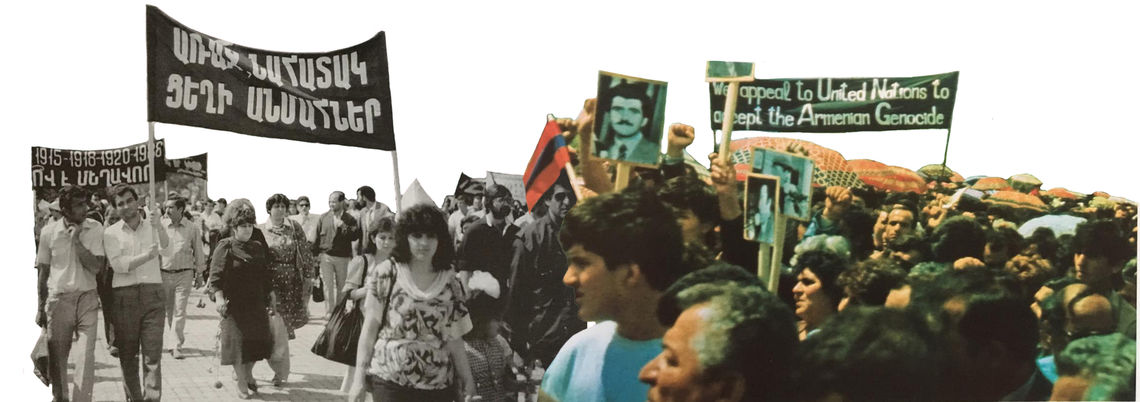
April 24
Armenians commemorate the anniversary of the 1915 Armenian Genocide. A khachkar (stone-cross) is placed at the Genocide Memorial dedicated to the victims of the Sumgait Pogrom.
May 1
Officially sanctioned May 1 demonstrations take place in Yerevan. Demonstrators hold placards in support of the Armenians of Nagorno Karabakh as well as ones that criticize the Communist Party leadership in Armenia.
May 12-16
The first trial begins in Azerbaijan of the Sumgait Pogrom. Tale Ismailov is sentenced to 15 years in prison for “premeditated murder in aggravating circumstances, motivated by hooliganism."
A rally is held near the Matenadaran in Yerevan to express indignation at the trial for the massacres in Sumgait. Demonstrators are outraged at the light sentence handed down and demand the central government televise the Sumgait trial in Armenia and to change the panel of judges to reduce the risk of bias. In Stepanakert a general strike forces the shutdown of factories and public transportation.
May 19
Igor Muradyan organizes a rally in Opera Square in support of the First Secretary of the Central Committee of the Communist Party of Armenia, Karen Demirchyan where he calls for the use of force against force. A few days later, a new membership of the Karabakh Committee is established without Muradyan.
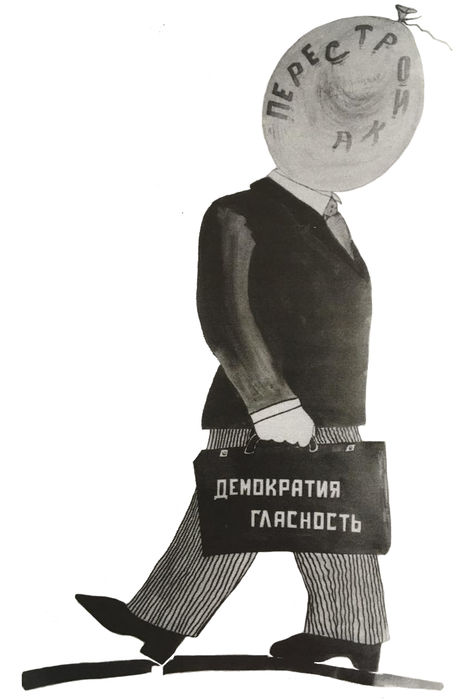
May 21
The plenary session of the Communist Party of Armenia resolves to dismiss Karen Demirchyan from his post and to appoint Suren Harutyunyan as First Secretary.
May 28
A rally is held in Opera Square. It is the 70th anniversary of the First Armenian Republic (1918-1920) and the Armenian tricolor is raised for the first time by Movses Gorgisyan.
June 1
The Nagorno Karabakh District Television station is established.
June 4-15
Peaceful demonstrations continue and intensify in Yerevan and Stepanakert. Hunger strikes and sit-ins at Opera Square are organized by hundreds of students who demand a session of the Supreme Soviet of Armenian SSR to give a positive response to the resolution of the Regional Soviet of NKAO on reunification with Armenia. They also appeal to authorities to remove the Sumgait trials from Azerbaijani courts to the All-Union Supreme Court to ensure impartiality.
On June 12, the legislature of Nagorno Karabakh unanimously votes to secede from Azerbaijan and to rejoin Soviet Armenia. The legislature also votes to rename the region Artsakh, it’s pre-fourteenth century Armenian name. The same day, the presidium of the Supreme Soviet of Azerbaijan rejects the Nagorno Karabakh vote declaring it “null and void.”
June 14
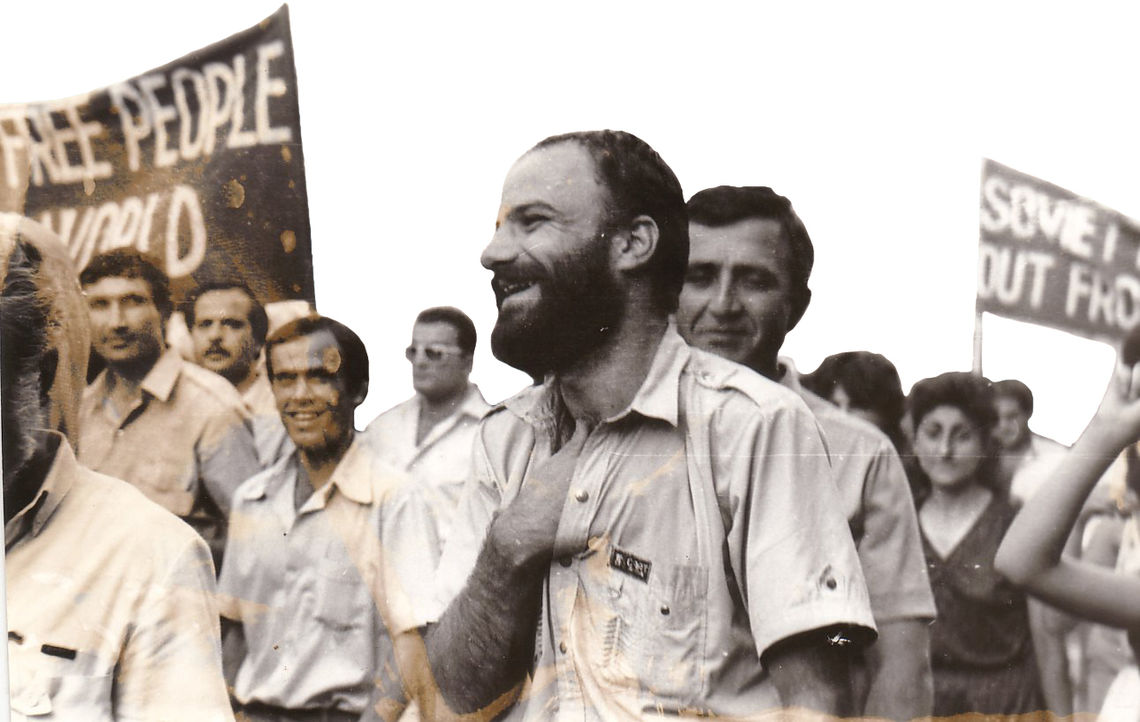
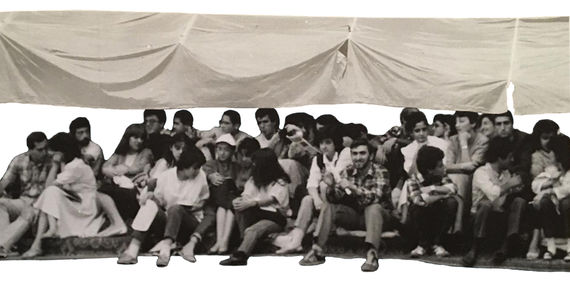
Virtually all businesses and schools in Yerevan are shut down by a general strike demanding the Armenian legislature’s support. At a gathering of 100,000 in Yerevan, the Armenian Communist Party’s new leader, Suren Harutunyan, tells the demonstrators that the Karabakh question will be the first issue on the agenda the following day. In anticipation of the legislative vote, the protest organizers call off the strikes.
June 15
A special session of the Supreme Soviet of Armenia unanimously votes on the reunification of Nagorno Karabakh with Armenia. The vote is based on Article 70 of the Soviet Constitution which guarantees the “free self-determination of nations and the voluntary association of equal Soviet Socialist Republics.” The Supreme Soviet of the USSR is sent an appeal to give a positive solution to the issue.
June 16
The Supreme Soviet of Azerbaijan, in return, votes not to give up Nagorno Karabakh based on Article 78 which states that the territory of a republic “may not be altered without its consent.” At the same time, with demonstrations and a four week old general strike continuing in Nagorno Karabakh, Soviet troops enter Stepanakert.
July 4
A general strike is announced, once again demanding the reunification of NKAO with Armenia and for guarantees for the safety of the Armenian population. Zvartnots Airport in Yerevan ceases to function.
July 5
During the peaceful sit-in shutting down Zvartnots, a young Armenian man is shot dead. Soldiers gave a 30-second warning for demonstrators to disperse, then attack even before the 30 seconds elapse. The funeral for the young victim brings out hundreds of thousands of Armenians into the streets and changes the tide - anti-Soviet slogans begin to appear at demonstrations. The crowd in Opera Square puts forth three principal demands: Reunification of NK with Armenia, a change of venue in the Sumgait trials, and full press coverage of all events relating to the controversy.
July 12
The session of the Regional Soviet of NKAO announces its separation from Azerbaijan SSR.

July 18
An emergency session of the USSR Supreme Soviet Presidium rejects the demands by the Armenians for reunification citing Article 78 of the Soviet Constitution, however, promises to enhance self-government, better living conditions, the formation of a task force to supervise the region’s return to order and the formation of a government commission to study additional measures to address and ease Armenian complaints. It is decided to send a delegation of representatives of the Presidium of the Supreme Soviet of the USSR headed by Arkadi Volski to NKAO.
On the same day, Henrik Poghosyan, the First Secretary of the Nagorno Karabakh District Committee of the Communist Party emphasizes the impossibility of NKAO remaining within Azerbaijan SSR.
July 27
The First Secretaries of the Azerbaijan SSR and Armenia SSR visit NKAO by invitation from A. Volski.
July- August
Protests and rallies continue in Yerevan despite the official ban on demonstrations. Soviet authorities respond with threats against protest organizers that they will face criminal charges. Mass strikes and demonstrations in both Armenia and Karabakh are terminated by the end of July.
August 19
The Karabakh Committee announces a rally in Opera Square about the creation of the Pan-Armenian National Movement. The program of the Movement is put into circulation.
September 18
Tensions in Karabakh spiral out of control when a bus carrying Armenian students is ambushed and attacked by Azerbaijanis near the settlement of Khojalu not far from Stepanakert. Many of the students are injured. When word reaches a rally in Stepanakert of the attack, protesters head for the site of the incident. Firearms are used for the first time between the sides leaving one dead and more than 40 people seriously injured. Homes of Armenians in Shushi are set on fire as are the homes of Azerbaijanis in Stepanakert.
September 19
At a massive rally in Yerevan, Hrant Voskanyan, the Chairman of the Armenian SSR Presidium announces immediate plans for parliament to meet to examine the issue of Karabakh again. Demonstrators decide to continue a general strike until parliament convenes.
September 20
Moscow declares a state of emergency in Nagorno Karabakh. A curfew comes into force and foreign journalists are banned from Azerbaijan and Armenia. Despite the ban, protests and general strikes continue in Yerevan. Major cities across the country are paralyzed.
September 21
Moscow announces the introduction of martial law in Nagorno Karabakh.
October 9
Candidates from the Karabakh Committee, Khachik Stamboltsyan and Ashot Manucharyan are elected delegates to the Supreme Soviet of Armenia SSR. Stamboltsyan receives 78 percent of the votes however is accused of “election rigging,” while Manucharyan receives death threats.
October 18
The trial of three of the people involved in the Sumgait Pogrom - Ahmed Ahmedov, Ismail Ismailov and Yavar Javarov - begins at the Supreme Court of the USSR in Moscow. They are charged with “organizing and taking direct part in mass disorders accompanied by pogroms, acts of arson and murder.” Their trial has been transferred from the courts of Azerbaijan SSR to Moscow.
November 18
One of the Azerbaijani defendants on trial for the massacres in Sumgait, Ahmed Ahmedov is found guilty of murder and sentenced to death.
November 19
A massive demonstration takes place in Baku, the capital of Azerbaijan SSR protesting the death sentence. By November 22, violence that had started in Baku spreads to other towns and villages in Azerbaijan, Nagorno Karabakh and the exclave of Nakhichevan. A curfew is implemented and tanks and troops are deployed to Baku, Kirovabad and Nakhichevan. Approximately 500 Armenian women and children are evacuated from Nakhichevan by troops and sent to Armenia.
November 22
Four soldiers are killed in Kirovabad during anti-Armenian riots. On the same day, the session of the Supreme Soviet of Armenian SSR passes a law condemning the 1915 Genocide of Armenians by Ottoman Turkey. The session is cut short, however, as news is received about the acts of violence against Armenians in Baku, Kirovabad, Nakhichevan and other Armenian-populated regions of Azerbaijan. Deportation of Armenians from Azerbaijan commences.
Over the course of a month, approximately 180,000 Armenians flee Azerbaijan and an approximate 160,000 Azerbaijanis flee their homes in Armenia.
November 24
Following the killings in Kirovabad, people demand the the Supreme Soviet of Armenia convene an extraordinary session. Groups of protesters escort parliamentarians from their homes to Opera Square where the session is scheduled to take place to ensure quorum is secured. Among other decisions taken that night, the Armenian SSR Supreme Soviet recognizes the pogroms in Sumgait as genocide. At 1 a.m. the next morning, it is announced that only laws approved by the Supreme Soviet of Armenian SSR would operate in Armenia. Not soon after, troops and tanks appear on the streets of Yerevan, Moscow denounces the decision of Armenian authorities and imposes martial law.
December 7
Earthquake
A massive earthquake rocks northern Armenia. The towns of Leninakan (Gyumri), Kirovakan (Vanadzor), Spitak and hundreds of other towns and villages are devastated. Approximately 25,000 are killed, thousands injured and thousands more are left homeless.
December 10
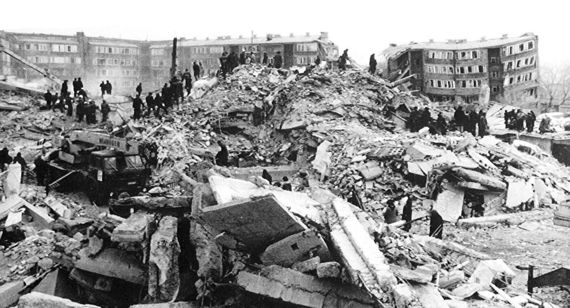
First Secretary Mikhail Gorbachev cuts a trip to Washington short and arrives in Armenia. He tours the regions devastated by the earthquake. That same evening, several members of the Karabakh Committee are arrested (while at the Writer’s Union). The rest are apprehended on January 7, 1989.
December 11
Mass demonstrations take place in Yerevan protesting the arrest of the members of the Karabakh Committee, clashes ensue.
On December 10 and 11, rumors quickly spread that authorities are taking the orphans from the earthquake (more than 10,000) out of Armenia to be adopted by other nationalities within the Soviet Union. The rumors are caused by reports in the Soviet press urging non-Armenian citizens to adopt the Armenian orphans. Several hundred injured children were flown to other parts of the Union to receive medical treatment; it was suspected that the flights were part of the adoption scheme. Armenians are outraged and about 100,000 people gather at Opera Square to oppose this. A melee ensues, protesters clash with police and this is used as a pretext to arrest the seven members of the Karabakh Committee. They are charged with “fomenting public disorder.”
In February 1989, Tass [news agency] placed the number of victims during the previous year’s conflict in Azerbaijan and Armenia at 91 dead and 1,650 injured. Among the casualties were four Soviet soldiers, as well as 117 troops and 32 militiamen injured. Criminal charges were filed against 517 people without specifying their nationality. In addition nearly 300,000 had fled their homes in both republics. More than 100 “chiefs of internal affairs organs” had been fired or reprimanded in Azerbaijan.
EVN Report wishes to thank the Friedrich Ebert Stiftung (FES) for their cooperation and support.
----------------------------------
1- The Krabagh File by The Zoryan Institute for Contemporary Armenian Research & Documentation, First Edition, Cambridge ,Tronto, March 1988.
2- "Nagorno-Karabagh and Soviet Nationalities Conflicts: Human Rights Concerns," Hrair Balian. Working paper submitted to the United Nations Economic and Social Council Commission on Human Rights, January to March, 1991.
3- "Iconography of Armenian Identity: The Memory of Genocide and the Karabagh Movement," Volume 1, by Harutyn Marutyan, National Academy of Sciences, Armenia, 2009.
4-Nationalist Mobilization and the Collapse of the Soviet State, by Mark R. Beissinger, Cambridge University Press, Feb 4, 2002
5-Los Angeles Times, February 26, 1988.
6-Black Garden: Armenia and Azerbaijan through Peace and War, Thomas de Waal, New York University Press, 2003.
7- NKR Representative office in USA.
8- "Modern Hatreds: The Symbolic Politics of Ethnic War," Stuart J. Kaufman, Cornell University Press, 2001.
9-«Պիոներ կանչի» ազատությունը
10-Հայրս երջանիկ մարդ էր. հուշեր նկարիչ Սարգիս Մուրադյանի մասին
11-[Շարժում 1988/25]. Արկադի Կարապետյան` փետրվարի 13-ին Ստեփանակերտում կազմակերպեցինք առաջին հանրահավաքը

